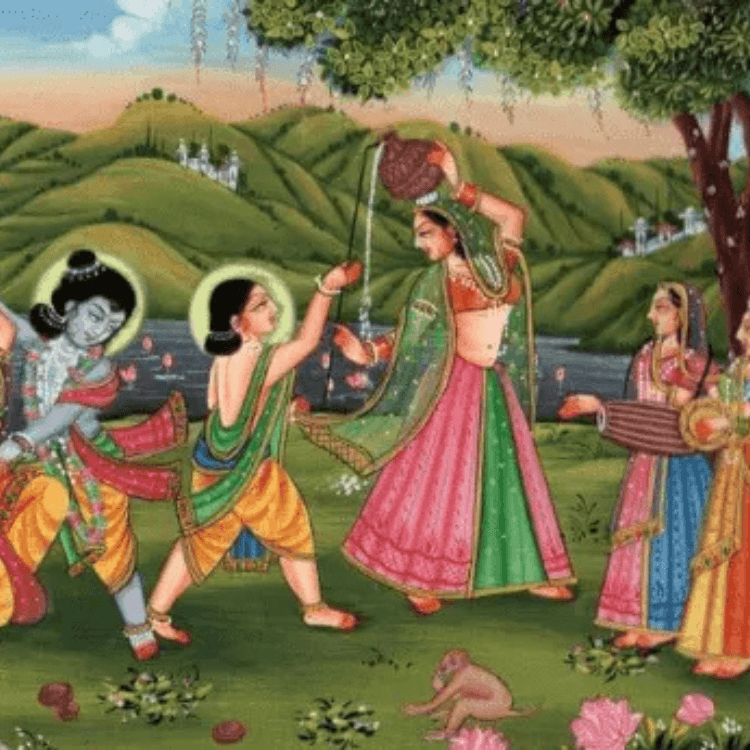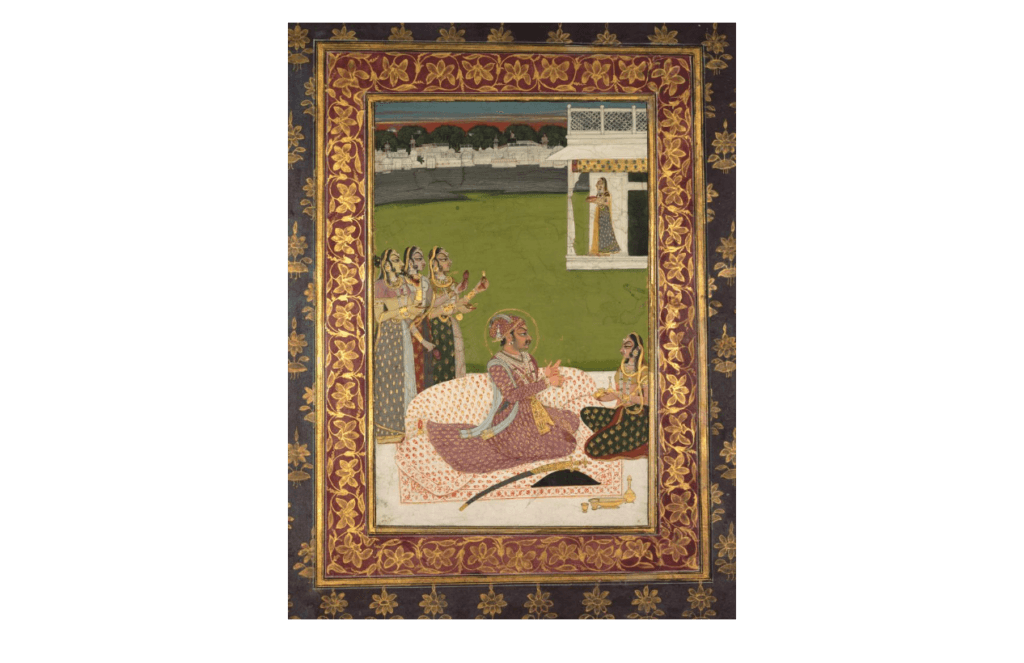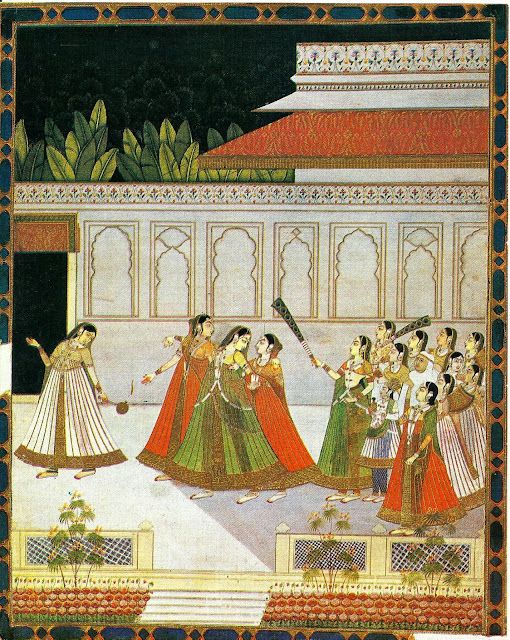
Your Cart
Why Miniature Painting is still a raging beauty?

Miniature Painting in India ---------------------------
‘Good things come in small packages!’ Miniature painting, as the name suggests, are small in size. However, they are large in stature, and artistic fervour. Besides, they convey a brilliance of mastery that continues to shine bright in the creative world of arts to date.
What exactly are miniature paintings? Indian paintings can broadly be classified into Murals and Miniatures. Murals are large paintings, painted on the walls of temples, etc. Miniatures, on the other hand, are painted on books, albums, or other materials, such as cloth and palm leaves.
About Miniature Painting - The Past -----------------------------------
The pioneers of miniature paintings are the Palas of Bengal. Their paintings can be dated back to the 8th century and included images of Buddha that were painted on palm leaves and exhibited in the monasteries. This form of miniature art became popular across the world, especially in Asian countries. Around the 11th century, the Jain School of Miniature Paintings flourished painting male figures and goddesses. However, it was during the Mughal and Rajput eras that miniature paintings also experienced a golden era of creativity and expression.
The Mughal School of Miniature Painting was influenced by Persian paintings. The paintings consisted of royal courts, paintings of the rulers, battles, wildlife, the daily life of the people, and more. But with the decline of the Mughal era around the 18th century, the Rajasthan school came into action. The Rajput rulers, like the Mughal kings, provided encouragement and patronage for the art form to excel. Rajput miniature paintings depicted tales from the Mahabharata, Ramayana, stories about Krishna, etc.
The Orissa School, Deccan School, and Pahari School of Miniature Paintings, each enhanced the art form and gave it its unique characteristics, in terms of theme, colour, lines, and depiction.

The Present -----------
Undoubtedly, miniature paintings have a rich heritage and past to hold on to. However, with the passage of time and the advent of technology, the tedious methods of creating miniature paintings were naturally and increasingly replaced with modern elements. Original miniature paintings were made using natural colours and painted with special brushes, such as those made of squirrel hair for delicate and minute detailing. Today, only few artists use natural paints. Media influences, such as videos, sculpting, installations, and animations are often used to upgrade artistic ambitions.
Yet, one would wonder why is miniature art still such a raging beauty. What aspects of the miniature paintings make them truly irresistible artwork for the new generation of artists? Well, the answer lies in understanding the finesse and purpose of miniature paintings.

Uses and Applications ---------------------
Miniature paintings are a perfect size for not only books but also for a variety of other materials. Several miniature artists of today specialize in incorporating paintings onto different platforms, such as jewellery designs, textiles, rugs, ceramics, wall hangings, and more. Also, they continue to be important mediums of spiritual and religious paintings.
However, besides the many applications of the art, the aesthetics and essence of preserving the tradition and beauty of the miniature paintings, is reason enough for the new generation of painters to continue to pursue, learn and evolve the art form. The miniature paintings of yesteryears are fraught with lessons on artistic intensity, the use of colours and lines, facial expressions, storytelling, and more. The paintings were and are a way of depicting the way of life of the respective times. And most modern contemporary miniature artists sought to bring together the past, present, and future using their paintings as a medium of expression.
Aspects of Miniature Painting -----------------------------
There are several reasons why miniature paintings are still relevant in the digital and photography age of today. Of course, painting as such can never get extinct from the consciousness of society. Creative expression through paintings is an integral part of the history, culture, and heritage of a region. But there are certain aspects pertaining to miniature paintings that make them important for the new generations.
Miniature paintings are the hallmark of paying attention to detail. Painters over the years and across the schools have laid emphasis on capturing the minutest of details. These could be the backdrop, the expressions, the costumes, or the narratives. Each of these elements is portrayed with stunning clarity. Contemporary artists relish and take away this important aspect of miniature paintings to tell a story of their own.
Another characteristic of miniature paintings is their capacity to tell tales. Stories from epics and history have often found their way onto the canvas of miniature artists. Contemporary miniature painters use this aspect to comment on the social, cultural, and political concerns and commentaries of our time. Painters such as Shahzia Sikander and Nilima Sheikh are masters of this art. They are able to drive political, cultural, geographical, and feminist narratives using their miniature paintings. For instance, Sikander’s most famous work ‘Parallax’ uses digital animation in miniature paintings to describe the concepts and conflicts that span across regions, events, and human characters. Similarly, Sheikh’s popular series ‘When Champa Grew Up’ describes the horrific story events of a woman murdered for dowry.

Some of the leading miniature artists in the world today incorporate the traditional styles of the Mughal and Rajput miniature paintings. Some, in fact, prefer the old-school methods and continue to follow them strictly, Others, however, integrate modern techniques, such as digital animation and layering to enhance their work. Either way, the themes have evolved and the new generation of artists continues to adopt the past, but also ready to adapt to change. Miniature paintings are thus an artistic legacy that thanks to their deep roots has the ability to thrive and branch out spreading its glory and message across both time and space.
Conclusion ----------
The beauty of detailing in the art of miniature painting fascinates every art lover and artist. Miniature paintings are one of the most beautiful forms of visual storytelling. If you love miniature painting, learn from the basics to advanced level on Rooftop app.